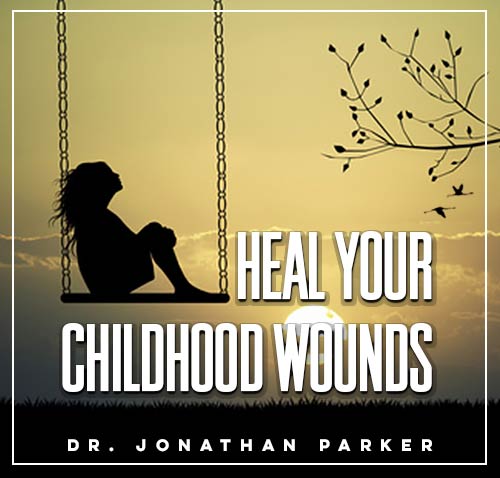Abandonment Trauma Recovery: Heal Inner Pain

Before diving in, please note: This post is for informational purposes only. If you’d like to know more about how we approach topics, feel free to check out our friendly Disclaimer Page.
Hey there, amazing readers! 🖐️ Just a quick note: yes, we know there are a lot of ads here. Trust us, we get it—it’s not the prettiest look, but they help us keep this blog alive and kicking. Those pesky little ads cover the costs of all the behind-the-scenes magic, from hosting and tech stuff to creating content we hope you’ll love.
We’re committed to delivering quality posts, and your support (even just sticking around despite the ads) means everything to us. So, bear with us, and thanks for helping us keep the good vibes rolling. Now, on to the fun stuff! 😉
TRANSLATE BUTTON AT THE END OF THE ARTICLE
A Quick Overview
Abandonment trauma is a deeply-rooted emotional wound that occurs when a person feels deserted, rejected, or left alone, often stemming from childhood experiences.
This type of trauma can have a profound impact on an individual’s mental health, self-esteem, and ability to form healthy relationships.
Healing from abandonment trauma requires a combination of self-reflection, therapy, and self-care practices to address the underlying emotional pain and rebuild a sense of trust and security within oneself.
In this article, we will delve into the understanding of abandonment trauma, its signs and symptoms, its impact on mental health, and techniques for healing and recovery.
Understanding Abandonment Trauma
Abandonment trauma is typically caused by experiences of neglect, rejection, or loss during childhood, such as the absence of a caregiver, parental divorce, or emotional abandonment.
These experiences can create deep-seated feelings of insecurity, unworthiness, and fear of abandonment in adulthood.
Individuals who have experienced abandonment trauma may struggle to form secure attachments with others, have difficulty trusting people, and often feel like they are unworthy of love and care.
This trauma can manifest in various ways, such as anxiety, depression, low self-esteem, and challenges in forming and maintaining relationships.
Signs and Symptoms of Abandonment Trauma
Recognizing the signs and symptoms of abandonment trauma is crucial in seeking help and beginning the healing process.
Some common signs of abandonment trauma include:
Fear of intimacy and emotional closeness.
Difficulty trusting others.
Low self-worth and feelings of inadequacy.
Chronic feelings of loneliness and isolation.
Avoidance of relationships or fear of commitment.
Hypervigilance and fear of rejection.
Emotional instability and mood swings.
Difficulty expressing emotions or vulnerability.
Self-sabotaging behaviors in relationships.
Persistent feelings of emptiness and longing for connection.
Impact of Abandonment Trauma on Mental Health
Abandonment trauma can have a significant impact on an individual’s mental health, leading to various psychological and emotional issues.
Some common effects of abandonment trauma on mental health include:
Increased risk of anxiety disorders, such as generalized anxiety disorder or panic disorder.
Development of depression and low mood.
Heightened risk of developing attachment disorders.
Struggles with self-esteem and self-worth.
Difficulty regulating emotions and coping with stress.
Challenges in forming and maintaining healthy relationships.
It is essential to address abandonment trauma and its effects on mental health to prevent further distress and improve overall well-being.
Techniques for Healing Abandonment Trauma
Healing from abandonment trauma is a complex and multi-faceted process that requires patience, self-compassion, and professional support.
Some effective techniques for healing abandonment trauma include:
Discover "SUPERFOODS: The Key to Health and Balance🥗" 🌿🌺
Therapy: Seeking therapy with a qualified mental health professional, such as a therapist or counselor, can help individuals explore and process their abandonment trauma in a safe and supportive environment.
Inner Child Work: Engaging in inner child work through techniques like visualization, journaling, or guided meditation can help individuals reconnect with their younger selves and address unresolved childhood wounds.
Mindfulness and Meditation: Practicing mindfulness and meditation can help individuals cultivate self-awareness, regulate emotions, and reduce anxiety and stress related to abandonment trauma.
Self-Compassion: Practicing self-compassion and self-care can help individuals develop a sense of self-worth and self-love, counteracting feelings of unworthiness and inadequacy.
Creative Expression: Engaging in creative outlets like art, music, or writing can provide a healthy means of expressing emotions and processing trauma.
Building Self-Esteem After Abandonment
Rebuilding self-esteem after abandonment trauma is a vital aspect of healing and recovery.
Some strategies for building self-esteem include:
Affirmations: Practicing daily affirmations can help individuals challenge negative self-beliefs and cultivate a more positive self-image.
Setting Boundaries: Establishing healthy boundaries in relationships can help individuals protect their emotional well-being and foster self-respect.
Self-Care: Prioritizing self-care activities, such as exercise, healthy eating, and relaxation techniques, can boost self-esteem and overall well-being.
Seeking Support: Surrounding oneself with supportive and nurturing relationships can enhance feelings of self-worth and validation.
Celebrating Achievements: Acknowledging and celebrating personal achievements, no matter how small, can boost confidence and self-esteem.
Rebuilding Trust in Relationships
Rebuilding trust in relationships after abandonment trauma can be challenging but is essential for forming healthy connections with others.
Some steps to rebuild trust include:
Communication: Open and honest communication with partners or loved ones can help address fears and insecurities related to abandonment trauma.
Setting Realistic Expectations: Setting realistic expectations for relationships and understanding that trust takes time to build can reduce anxiety and fear of abandonment.
Developing Self-Trust: Building self-trust through self-awareness and self-acceptance can enhance one’s ability to trust others.
Therapy: Couples therapy or relationship counseling can provide a safe space to work through trust issues and improve communication.
Mindfulness: Practicing mindfulness can help individuals stay present in relationships, reduce anxiety, and enhance trust in others.
Seeking Professional Help for Abandonment Trauma
Seeking professional help for abandonment trauma is crucial in the healing process, as therapists and counselors can provide guidance, support, and tools for recovery.
Some options for seeking professional help include:
Therapy: Individual therapy with a licensed therapist trained in trauma-informed care can help individuals explore and process abandonment trauma.
Group Therapy: Participating in group therapy or support groups with others who have experienced abandonment trauma can provide a sense of community and understanding.
EMDR Therapy: Eye Movement Desensitization and Reprocessing (EMDR) therapy is a specialized form of therapy that can help individuals process traumatic memories and experiences.
Psychiatry: Consulting a psychiatrist for medication management can be beneficial for individuals experiencing severe anxiety or depression related to abandonment trauma.
Trauma-Informed Care: Seeking therapists or counselors who specialize in trauma-informed care can ensure that individuals receive appropriate treatment and support for abandonment trauma.
Self-Care Practices for Abandonment Recovery
Practicing self-care is essential for abandonment recovery, as it helps individuals nurture their emotional well-being and promote healing.
Some self-care practices for abandonment recovery include:
Mindfulness: Engaging in mindfulness practices, such as meditation or deep breathing exercises, can help individuals stay present and reduce anxiety related to abandonment trauma.
Physical Activity: Regular exercise can boost mood, reduce stress, and improve overall well-being, which can aid in the healing process.
Healthy Eating: Eating a balanced and nutritious diet can support mental health and provide the necessary nutrients for recovery.
Rest and Relaxation: Prioritizing rest and relaxation through activities like reading, listening to music, or taking a bath can help individuals recharge and reduce stress.
Connecting with Nature: Spending time in nature, such as going for a walk in the park or gardening, can provide a sense of calm and connection to the environment.
Embracing Vulnerability in Healing
Embracing vulnerability is a crucial aspect of healing from abandonment trauma, as it allows individuals to connect with their emotions and experiences in a meaningful way.
Some ways to embrace vulnerability in healing include:
Discover "Sports Nutrition: The Importance of Nutrition and Exercise for Overall Health 🥗🏋️"
Journaling: Writing about feelings, thoughts, and experiences can help individuals process emotions and gain insight into their abandonment trauma.
Therapy: Opening up and being vulnerable with a therapist or counselor can foster trust and create a safe space for healing.
Support Groups: Participating in support groups with others who have experienced abandonment trauma can provide a sense of validation and understanding.
Expressive Arts: Engaging in expressive arts, such as painting, drawing, or music, can provide a creative outlet for exploring emotions and experiences.
Mindfulness Practices: Practicing mindfulness can help individuals stay present with their emotions and experiences, fostering a sense of vulnerability and openness.
Cultivating Resilience After Abandonment
Cultivating resilience after abandonment trauma is essential for building strength and adaptability in the face of adversity.
Some strategies for cultivating resilience include:
Self-Compassion: Practicing self-compassion and self-care can help individuals develop a sense of inner strength and acceptance.
Positive Affirmations: Using positive affirmations can help individuals challenge negative self-beliefs and cultivate a more resilient mindset.
Seeking Support: Connecting with supportive relationships or seeking therapy can enhance resilience and provide a sense of validation and understanding.
Mindfulness Practices: Engaging in mindfulness practices can help individuals cope with stress and build resilience in the face of abandonment trauma.
Setting Goals: Setting realistic and achievable goals can help individuals regain a sense of control and purpose in their lives.
Finding Inner Peace and Closure
Finding inner peace and closure after abandonment trauma is a deeply personal and transformative process that requires self-reflection, acceptance, and forgiveness.
Some ways to find inner peace and closure include:
Forgiveness: Practicing forgiveness towards oneself and others can release resentment and anger related to abandonment trauma.
Mindfulness Practices: Engaging in mindfulness practices can help individuals stay present and cultivate a sense of inner peace.
Therapy: Working with a therapist or counselor can help individuals explore and process unresolved emotions and experiences, leading to closure.
Spirituality: Connecting with one’s spirituality or belief system can provide comfort and guidance in finding inner peace and closure.
Self-Reflection: Taking time for self-reflection and introspection can help individuals gain insight and clarity on their abandonment trauma and begin the healing process.
Moving Forward After Abandonment Trauma
Moving forward after abandonment trauma is a courageous and empowering journey towards self-discovery, healing, and growth.
Some steps to move forward after abandonment trauma include:
Self-Exploration: Engaging in self-reflection and introspection can help individuals understand the root causes of their abandonment trauma and begin the healing process.
Setting Boundaries: Establishing healthy boundaries in relationships can protect individuals from further emotional harm and foster self-respect.
Therapy: Continuing therapy or counseling can provide ongoing support and guidance in navigating the challenges of abandonment trauma.
Self-Care: Prioritizing self-care practices, such as exercise, healthy eating, and relaxation, can support overall well-being and aid in the healing process.
Seeking Support: Connecting with supportive relationships, support groups, or mental health professionals can provide validation, understanding, and encouragement in moving forward.
Conclusion
Healing from abandonment trauma is a transformative and empowering journey towards self-discovery, self-acceptance, and inner peace.
By understanding the root causes of abandonment trauma, recognizing the signs and symptoms, seeking professional help, and practicing self-care and self-compassion, individuals can begin the healing process and rebuild a sense of security, trust, and resilience within themselves.
Embracing vulnerability, cultivating resilience, and finding inner peace and closure are essential steps in moving forward after abandonment trauma and creating a life filled with meaning, connection, and fulfillment.
With patience, self-compassion, and dedication to healing, individuals can overcome the pain of abandonment trauma and create a brighter and more hopeful future for themselves.

The Enlightenment Journey is a remarkable collection of writings authored by a distinguished group of experts in the fields of spirituality, new age, and esoteric knowledge.
This anthology features a diverse assembly of well-experienced authors who bring their profound insights and credible perspectives to the forefront.
Each contributor possesses a wealth of knowledge and wisdom, making them authorities in their respective domains.
Together, they offer readers a transformative journey into the realms of spiritual growth, self-discovery, and esoteric enlightenment.
The Enlightenment Journey is a testament to the collective expertise of these luminaries, providing readers with a rich tapestry of ideas and information to illuminate their spiritual path.
Our Diverse Expertise 🌟
While our primary focus is on spirituality and esotericism, we are equally passionate about exploring a wide range of other topics and niches 🌍📚. Our experienced team is dedicated to delivering high-quality, informative content across various subjects ✨.
To ensure we provide the most accurate and valuable insights, we collaborate with trusted experts in their respective domains 🧑🏫👩🏫. This allows us to offer well-rounded perspectives and knowledge to our readers.
Our blog originally focused on spirituality and metaphysics, but we’ve since expanded to cover a wide range of niches. Don’t worry—we continue to publish a lot of articles on spirituality! Frequently visit our blog to explore our diverse content and stay tuned for more insightful reads.







